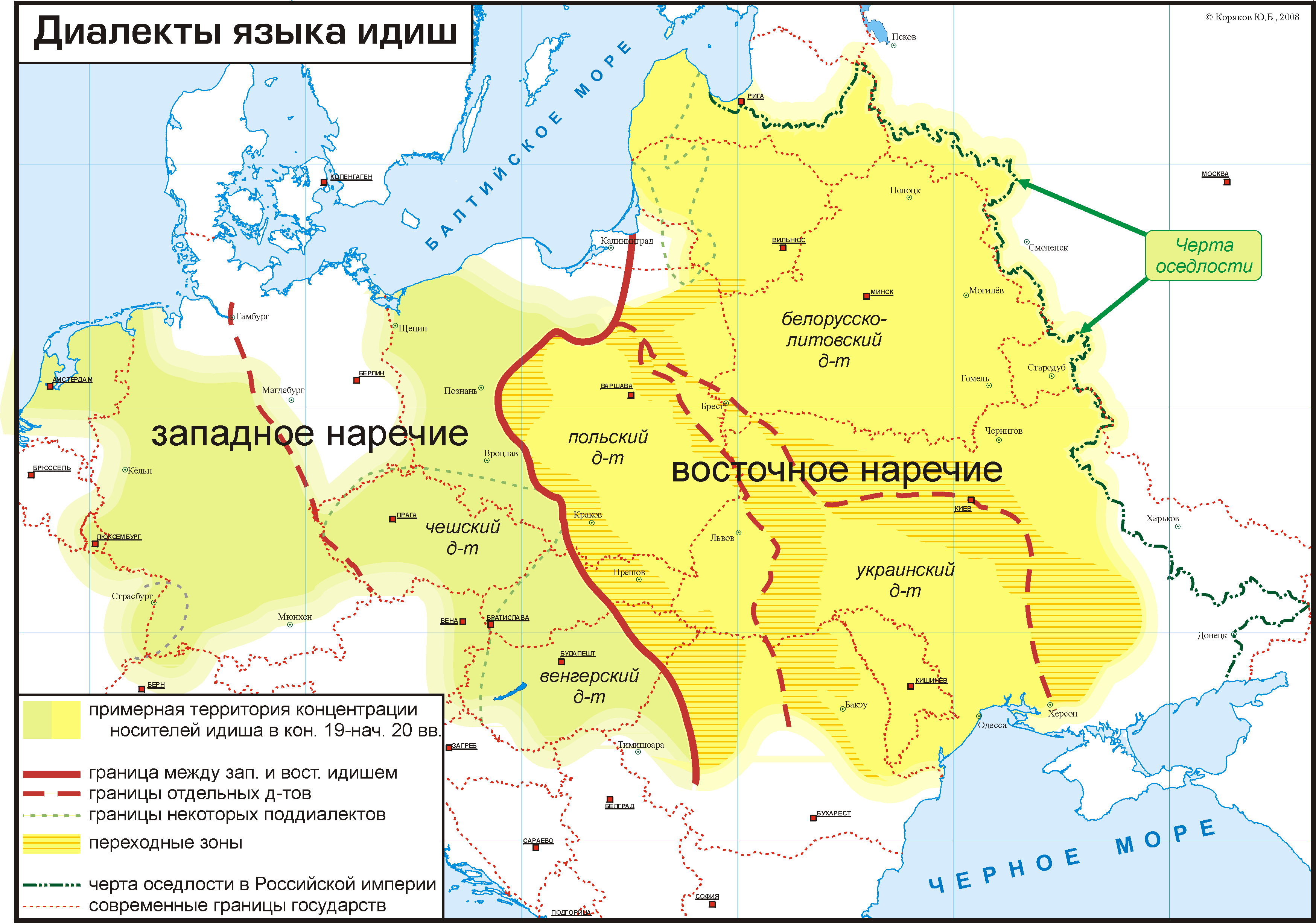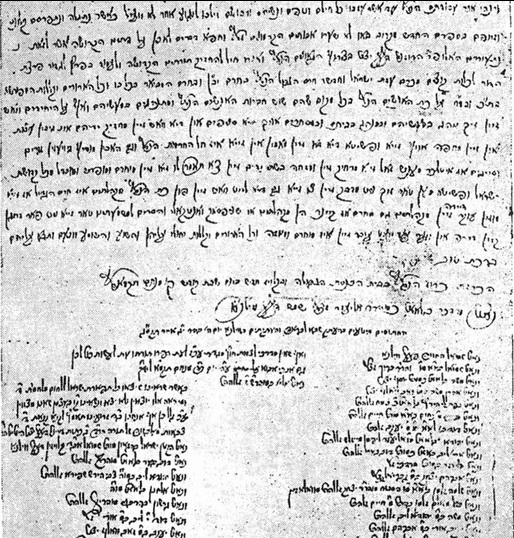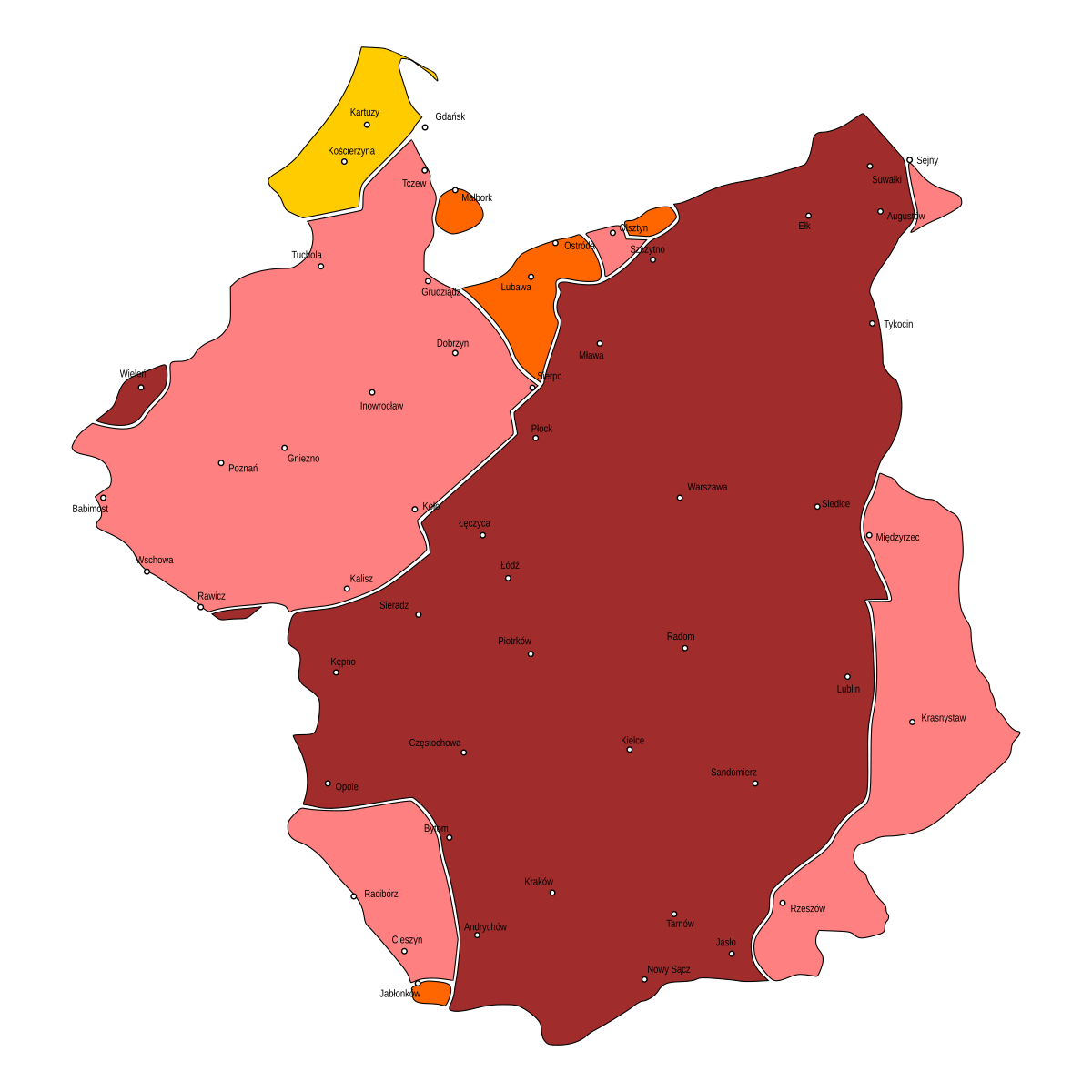|
Sabesdiker Losn
Der sabesdiker-losn (Yiddish: דער סאַבעסדיקער לשון (לאָסן)) is a dialectal feature characteristic of the Northeastern dialect of the Yiddish language ( NEY, ''Litvisher-vaysrusisher dialekt'', צפֿון ייִדיש ''Tsofn-yidish''), which is the replacement, or merger of the "hushing" (post-alveolar) consonants "ch", "sh" (IPA: /tʃ/, /ʃ/), with the "hissing" (alveolar) ones, "ts", "s" (IPA: /ts/, /s/). The name of the term is a shibboleth: the phrase ''"דאָס שבתֿדיקע לשון" "dos shabesdike loshn"'' (in standard Yiddish) means "Sabbath speech", hinting at the perception that this feature is substandard. "History of the Yiddish Language", by Max Weinreichbr>p. 534/ref> In addition to the shibboleth, the use of the masculine article ''der'' indicates NEY's tendency to use either the masculine or the feminine gender for nouns where Standard Yiddish uses the neuter. It is similar to the dialectical feature of Polish language called ''mazurzeni ... [...More Info...] [...Related Items...] OR: [Wikipedia] [Google] [Baidu] |
Dialect
The term dialect (from Latin , , from the Ancient Greek word , 'discourse', from , 'through' and , 'I speak') can refer to either of two distinctly different types of linguistic phenomena: One usage refers to a variety of a language that is a characteristic of a particular group of the language's speakers. Under this definition, the dialects or varieties of a particular language are closely related and, despite their differences, are most often largely mutually intelligible, especially if close to one another on the dialect continuum. The term is applied most often to regional speech patterns, but a dialect may also be defined by other factors, such as social class or ethnicity. A dialect that is associated with a particular social class can be termed a sociolect, a dialect that is associated with a particular ethnic group can be termed an ethnolect, and a geographical/regional dialect may be termed a regiolectWolfram, Walt and Schilling, Natalie. 2016. ''American Engli ... [...More Info...] [...Related Items...] OR: [Wikipedia] [Google] [Baidu] |
Yiddish Language
Yiddish (, or , ''yidish'' or ''idish'', , ; , ''Yidish-Taytsh'', ) is a West Germanic language historically spoken by Ashkenazi Jews. It originated during the 9th century in Central Europe, providing the nascent Ashkenazi community with a vernacular based on High German fused with many elements taken from Hebrew (notably Mishnaic) and to some extent Aramaic. Most varieties of Yiddish include elements of Slavic languages and the vocabulary contains traces of Romance languages.Aram Yardumian"A Tale of Two Hypotheses: Genetics and the Ethnogenesis of Ashkenazi Jewry".University of Pennsylvania. 2013. Yiddish is primarily written in the Hebrew alphabet. Prior to World War II, its worldwide peak was 11 million, with the number of speakers in the United States and Canada then totaling 150,000. Eighty-five percent of the approximately six million Jews who were murdered in the Holocaust were Yiddish speakers, Solomon Birnbaum, ''Grammatik der jiddischen Sprache'' (4., erg. Aufl., Ham ... [...More Info...] [...Related Items...] OR: [Wikipedia] [Google] [Baidu] |
Northeastern Yiddish
Yiddish dialects are variants of the Yiddish language and are divided according to the region in Europe where each developed its distinctiveness. Linguistically, Yiddish is divided in distinct Eastern and Western dialects. While the Western dialects mostly died out in the 19th-century due to Jewish language assimilation into mainstream culture, the Eastern dialects were very vital until most of Eastern European Jewry was wiped out by the Shoah. The Northeastern dialects of Eastern Yiddish were dominant in 20th-century Yiddish culture and academia, but in the 21st-century, since Yiddish is largely dying out everywhere due to language assimilation, the Southern dialects of Yiddish that are preserved by many Hasidic communities, have become the most commonly spoken form of Yiddish. Varieties Yiddish dialects are generally grouped into either Western Yiddish and Eastern Yiddish. Western Yiddish developed from the 9th century in Western-Central Europe, in the region which was called ... [...More Info...] [...Related Items...] OR: [Wikipedia] [Google] [Baidu] |
Litvish
''Misnagdim'' (, "Opponents"; Sephardi pronunciation: ''Mitnagdim''; singular ''misnaged''/''mitnaged'') was a religious movement among the Jews of Eastern Europe which resisted the rise of Hasidism in the 18th and 19th centuries. The ''Misnagdim'' were particularly concentrated in Lithuania, where Vilnius served as the bastion of the movement, but anti-Hasidic activity was undertaken by the establishment in many locales. The most severe clashes between the factions took place in the latter third of the 18th century; the failure to contain Hasidism led the ''Misnagdim'' to develop distinct religious philosophies and communal institutions, which were not merely a perpetuation of the old status quo but often innovative. The most notable results of these efforts, pioneered by Chaim of Volozhin and continued by his disciples, were the modern, independent ''yeshiva'' and the Musar movement. Since the late 19th century, tensions with the Hasidim largely subsided, and the heirs of ''M ... [...More Info...] [...Related Items...] OR: [Wikipedia] [Google] [Baidu] |
Merger (phonology)
In historical linguistics, phonological change is any sound change that alters the distribution of phonemes in a language. In other words, a language develops a new system of oppositions among its phonemes. Old contrasts may disappear, new ones may emerge, or they may simply be rearranged. Sound change may be an impetus for changes in the phonological structures of a language (and likewise, phonological change may sway the process of sound change). One process of phonological change is ''rephonemicization'', in which the distribution of phonemes changes by either addition of new phonemes or a reorganization of existing phonemes. Mergers and splits are types of rephonemicization and are discussed further below. Types In a typological scheme first systematized by Henry M. Hoenigswald in 1965, a historical sound law can only affect a phonological system in one of three ways: * Conditioned merger (which Hoenigswald calls "primary split"), in which some instances of phoneme A be ... [...More Info...] [...Related Items...] OR: [Wikipedia] [Google] [Baidu] |
Consonant
In articulatory phonetics, a consonant is a speech sound that is articulated with complete or partial closure of the vocal tract. Examples are and pronounced with the lips; and pronounced with the front of the tongue; and pronounced with the back of the tongue; , pronounced in the throat; , and , pronounced by forcing air through a narrow channel ( fricatives); and and , which have air flowing through the nose (nasals). Contrasting with consonants are vowels. Since the number of speech sounds in the world's languages is much greater than the number of letters in any one alphabet, linguists have devised systems such as the International Phonetic Alphabet (IPA) to assign a unique and unambiguous symbol to each attested consonant. The English alphabet has fewer consonant letters than the English language has consonant sounds, so digraphs like , , , and are used to extend the alphabet, though some letters and digraphs represent more than one consonant. For example, ... [...More Info...] [...Related Items...] OR: [Wikipedia] [Google] [Baidu] |
International Phonetic Alphabet
The International Phonetic Alphabet (IPA) is an alphabetic system of phonetic transcription, phonetic notation based primarily on the Latin script. It was devised by the International Phonetic Association in the late 19th century as a standardized representation of speech sounds in written form.International Phonetic Association (IPA), ''Handbook''. The IPA is used by lexicography, lexicographers, foreign language students and teachers, linguistics, linguists, speech–language pathology, speech–language pathologists, singers, actors, constructed language creators, and translators. The IPA is designed to represent those qualities of speech that are part of wiktionary:lexical, lexical (and, to a limited extent, prosodic) sounds in oral language: phone (phonetics), phones, phonemes, Intonation (linguistics), intonation, and the separation of words and syllables. To represent additional qualities of speech—such as tooth wiktionary:gnash, gnashing, lisping, and sounds made wi ... [...More Info...] [...Related Items...] OR: [Wikipedia] [Google] [Baidu] |
Shibboleth
A shibboleth (; hbo, , šībbōleṯ) is any custom or tradition, usually a choice of phrasing or even a single word, that distinguishes one group of people from another. Shibboleths have been used throughout history in many societies as passwords, simple ways of self-identification, signaling loyalty and affinity, maintaining traditional segregation, or protecting from real or perceived threats. Origin The term originates from the Hebrew word (), which means the part of a plant containing grain, such as the head of a stalk of wheat or rye; or less commonly (but arguably more appropriately) "flood, torrent". The modern use derives from an account in the Hebrew Bible, in which pronunciation of this word was used to distinguish Ephraimites, whose dialect used a differently sounding first consonant. The difference concerns the Hebrew letter '' shin'', which is now pronounced as (as in '' shoe''). In the Book of Judges, chapter 12, after the inhabitants of Gilead under the c ... [...More Info...] [...Related Items...] OR: [Wikipedia] [Google] [Baidu] |
Shabbat
Shabbat (, , or ; he, שַׁבָּת, Šabbāṯ, , ) or the Sabbath (), also called Shabbos (, ) by Ashkenazim, is Judaism's day of rest on the seventh day of the week—i.e., Saturday. On this day, religious Jews remember the biblical stories describing the creation of the heaven and earth in six days and the redemption from slavery and The Exodus from Egypt, and look forward to a future Messianic Age. Since the Jewish religious calendar counts days from sunset to sunset, Shabbat begins in the evening of what on the civil calendar is Friday. Shabbat observance entails refraining from work activities, often with great rigor, and engaging in restful activities to honour the day. Judaism's traditional position is that the unbroken seventh-day Shabbat originated among the Jewish people, as their first and most sacred institution. Variations upon Shabbat are widespread in Judaism and, with adaptations, throughout the Abrahamic and many other religions. According to '' ... [...More Info...] [...Related Items...] OR: [Wikipedia] [Google] [Baidu] |
Max Weinreich
Max Weinreich ( yi, מאַקס ווײַנרײַך ''Maks Vaynraych''; russian: Мейер Лазаревич Вайнрайх, ''Meyer Lazarevich Vaynraykh''; 22 April 1894, Goldingen, Russian Empire – 29 January 1969, New York City) was a Russian Jewish linguist, specializing in sociolinguistics and Yiddish, and the father of the linguist Uriel Weinreich, who edited the ''Modern Yiddish-English English-Yiddish Dictionary''. He is known for popularising the phrase ''"A language is a dialect with an army and navy"''. Biography Weinreich began his studies in a German school in Goldingen (modern Kuldīga), transferring to the gymnasium in Libau (modern Liepāja) after four years. He then lived in Daugavpils and Łódź. Between 1909 and 1912, he resided in Saint Petersburg, where he attended I. G. Eizenbet's private Jewish gymnasium for boys. He was raised in a German-speaking family but became fascinated with Yiddish. In the early 1920s, Weinreich lived in Germany and pur ... [...More Info...] [...Related Items...] OR: [Wikipedia] [Google] [Baidu] |
Polish Language
Polish (Polish: ''język polski'', , ''polszczyzna'' or simply ''polski'', ) is a West Slavic language of the Lechitic group written in the Latin script. It is spoken primarily in Poland and serves as the native language of the Poles. In addition to being the official language of Poland, it is also used by the Polish diaspora. There are over 50 million Polish speakers around the world. It ranks as the sixth most-spoken among languages of the European Union. Polish is subdivided into regional dialects and maintains strict T–V distinction pronouns, honorifics, and various forms of formalities when addressing individuals. The traditional 32-letter Polish alphabet has nine additions (''ą'', ''ć'', ''ę'', ''ł'', ''ń'', ''ó'', ''ś'', ''ź'', ''ż'') to the letters of the basic 26-letter Latin alphabet, while removing three (x, q, v). Those three letters are at times included in an extended 35-letter alphabet, although they are not used in native words. The traditiona ... [...More Info...] [...Related Items...] OR: [Wikipedia] [Google] [Baidu] |
Mazurzenie
Mazurzenie () or mazuration is the replacement or merger of Polish's series of postalveolar fricatives and affricates ( written ) into the dentialveolar series (written ). This merger is present in many dialects, but is named for the Masovian dialect.Stanislaw Gogolewski, "Dialectology in Poland, 1873-1997", In: ''Towards a History of Linguistics in Poland'', by E. F. K. Koerner, A. J. Szwedek (eds.) (2001) p. 128/ref> This phonological feature is observed in dialects of Masuria and Masovia (Masovian dialect), as well as in most of Lesser Poland and parts of Silesia. There are also some peripheral mazurating islands in Greater Poland. The boundary of runs from north-east to south-west. It may have originated between the 14th and 16th centuries in the Masovian dialect. The feature is linked to the process of depalatalization (reducing of the number of palatalized consonants) similar to the phenomena of and ' in other dialects. A rarer term for mazuration is sakanie. In ... [...More Info...] [...Related Items...] OR: [Wikipedia] [Google] [Baidu] |





